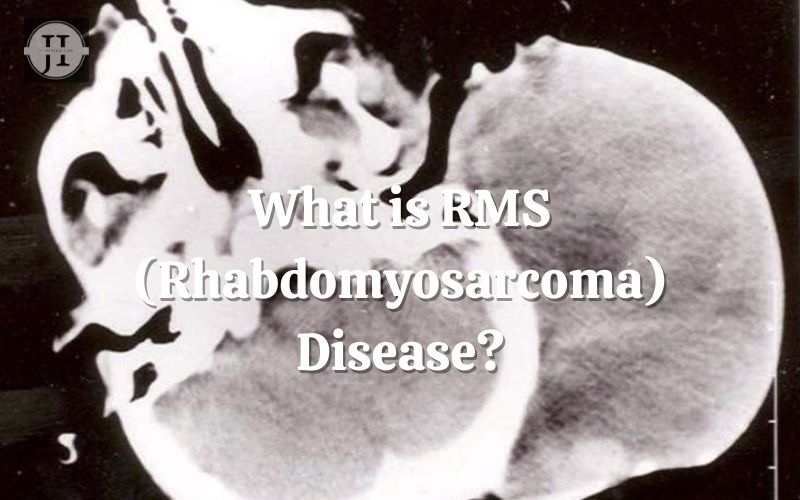Rhabdomyosarcoma (RMS) is a rare form of cancer that primarily affects children and young adults. This aggressive tumor develops in the body’s soft tissues, specifically the skeletal muscles, and can manifest in various locations. In this blog post, we will explore the general overview of RMS, its different types, signs and symptoms to look out for, the possible causes of this disease, and the available treatment options along with their success rates. Join us as we delve deeper into understanding and raising awareness about this challenging medical condition.
The General Overview of the RMS disease
Rhabdomyosarcoma (RMS) is a rare type of cancer that primarily affects children and adolescents. It is a malignant tumor that arises from the cells that normally develop into skeletal muscles. RMS can occur in any part of the body where there are skeletal muscles, including the head and neck region, genitourinary tract, and extremities. This aggressive and fast-growing cancer accounts for about 3% of childhood cancers and is more commonly diagnosed in boys than girls.
The Types of RMS Disease
Rhabdomyosarcoma (RMS) is a rare type of cancer that primarily affects children and adolescents. It is a malignant tumor that originates in the soft tissues, specifically in the skeletal muscle cells. RMS can occur in various parts of the body, including the head and neck, genitourinary system, limbs, and trunk. Understanding the different types of RMS is crucial for accurate diagnosis and treatment planning.
There are three main types of RMS: embryonal, alveolar, and pleomorphic.
- Embryonal rhabdomyosarcoma is the most common type, accounting for around 60% of all cases. It typically affects children under the age of 5 and most commonly occurs in the head and neck region. Embryonal RMS is characterized by elongated, spindle-shaped cells and has distinct genetic abnormalities.
- Alveolar rhabdomyosarcoma is less common but tends to have a poorer prognosis. It is usually found in older children and teenagers and can affect various sites, including the extremities, trunk, and abdomen. Alveolar RMS is characterized by a specific genetic translocation between two chromosomes, resulting in a fusion gene.
- Pleomorphic rhabdomyosarcoma is the least common type and predominantly affects adults over the age of 45. Pleomorphic RMS is composed of larger, irregularly shaped cells that lack the characteristic genetic abnormalities of the other subtypes.
| Type of RMS | Characteristics | Age Group | Most Common Sites |
|---|---|---|---|
| Embryonal | Elongated, spindle-shaped cells | Children under 5 | Head and neck |
| Alveolar | Genetic translocation, fusion gene | Children and teenagers | Extremities, trunk, abdomen |
| Pleomorphic | Larger, irregularly shaped cells | Adults over 45 | Varies |
Signs and Symptoms of Rhabdomyosarcoma
Rhabdomyosarcoma (RMS) is a rare type of cancer that primarily affects children. It develops in the soft tissues, such as muscles, and can occur in any part of the body. Identifying the signs and symptoms of Rhabdomyosarcoma is crucial for early detection and prompt treatment.
One of the most common symptoms of RMS is the presence of a noticeable lump or swelling. The lump may be located in the arms, legs, head, neck, or any other area where soft tissues are present. It is important to note that not all lumps are cancerous, but any unusual or persistent lump should be examined by a healthcare professional.
Another significant symptom of Rhabdomyosarcoma is persistent pain or discomfort. The affected area may experience localized pain, tenderness, or aching. The pain can worsen with movement or pressure. If there is no clear explanation for the pain, it is essential to consult with a medical expert to rule out any underlying health issues, including RMS.
Unexplained weight loss and fatigue are two more symptoms associated with RMS. Children with Rhabdomyosarcoma may experience a noticeable decrease in appetite and unintentional weight loss. Fatigue can also be present, leading to a lack of energy and difficulty performing regular activities. These symptoms can indicate the presence of various health conditions, including cancer, and should not be ignored.
Furthermore, Rhabdomyosarcoma can affect the eyes and cause noticeable visual changes. If a child complains of blurred vision, double vision, or difficulty moving their eyes, it is crucial to consult with an ophthalmologist for a comprehensive eye examination. Prompt diagnosis and treatment can greatly improve the prognosis for RMS.
In conclusion, early recognition of the signs and symptoms of Rhabdomyosarcoma is vital for timely intervention and improved outcomes.
What causes RMS disease?
Rhabdomyosarcoma (RMS) is a rare type of cancer that primarily affects children and adolescents. It is a malignant tumor that originates from the soft tissues, specifically the cells that develop into skeletal muscles. Although the exact cause of RMS disease is not yet fully understood, there are several factors that have been identified as potential contributors to its development.
One of the most commonly recognized risk factors for RMS disease is genetic predisposition. Certain genetic mutations or abnormalities can increase the likelihood of a child developing this type of cancer. For example, individuals with Li-Fraumeni syndrome, which is characterized by a mutation in the TP53 gene, have a higher risk of developing RMS.
Environmental factors also play a role in the development of RMS disease. Exposure to certain chemicals and substances, such as radiation or pesticides, has been linked to an increased risk of developing rhabdomyosarcoma. Additionally, some studies suggest a possible association between maternal drug use during pregnancy and the occurrence of RMS in the child.
In some cases, there is no identifiable cause for RMS disease, and it may develop spontaneously without any known risk factors. This highlights the complexity of the disease and the need for further research to fully understand its underlying causes.
- Genetic predisposition: Certain genetic mutations or abnormalities can increase the risk of developing RMS disease.
- Environmental factors: Exposure to certain chemicals, radiation, or pesticides may contribute to the development of rhabdomyosarcoma.
- Unknown causes: In some cases, the exact cause of RMS disease remains unknown.
While knowing the potential causes of RMS disease is essential for research purposes, it is important to remember that every case is unique. Each person’s experience with the disease may differ, and specific factors may have varying degrees of influence. It is crucial to consult with medical professionals and oncologists for a comprehensive understanding of individual cases and appropriate treatment strategies.
The Treatments and Success Rates for the RMS Disease
Rhabdomyosarcoma (RMS) is a rare type of cancer that affects the soft tissues of the body, such as muscles or connective tissues. It predominantly occurs in children and is considered one of the most common types of soft tissue sarcomas in pediatric patients. RMS can be classified into several subtypes, including embryonal, alveolar, pleomorphic, and botryoid. However, regardless of the subtype, early detection and timely treatment play a critical role in determining the success rate and overall prognosis for patients with RMS.
There are various treatment options available for individuals diagnosed with RMS. The choice of treatment depends on factors such as the stage of the disease, tumor size, location, subtype, and the overall health of the patient. The most common treatment modalities for RMS include surgery, radiation therapy, chemotherapy, and targeted therapies. In some cases, a combination of these treatments may be recommended to provide the best chances of success.
Surgery
One of the primary treatment options for RMS is surgery. Surgeons aim to remove the tumor and surrounding affected tissues while preserving the functionality of the affected area as much as possible. In localized cases of RMS, the surgeon may be able to completely remove the tumor, resulting in a higher success rate. However, in some instances, the tumor may be located in a challenging or critical area, making it difficult to achieve complete removal.
Radiation Therapy
Radiation therapy uses high-energy X-rays or other forms of radiation to target and destroy cancer cells. It can be administered externally or internally, depending on the individual case. Radiation therapy is often used as an adjuvant treatment after surgery to eradicate any remaining cancer cells and reduce the risk of recurrence. However, it can also be used as a primary treatment for RMS, especially in cases where surgical intervention is not feasible.
Chemotherapy
Chemotherapy involves the use of powerful medications that can kill cancer cells throughout the body. It is often administered intravenously but can also be given orally or through other methods. Chemotherapy is typically used in combination with surgery and radiation therapy to target microscopic cancer cells that may have spread beyond the primary tumor. It is especially effective in treating metastatic RMS or cases where the tumor cannot be surgically removed.
Success Rates and Prognosis
The prognosis for patients with RMS depends on various factors including the stage of the disease, subtype, location, and the overall response to treatment. The success rates can vary significantly, ranging from excellent outcomes with long-term survival to cases where the disease is resistant to treatment. Generally, if RMS is detected at an early stage and appropriate treatment is initiated promptly, the chances of successful treatment and long-term survival increase.
| Treatment Options | Success Rates |
|---|---|
| Surgery | Varies depending on tumor size and location |
| Radiation therapy | Approximately 60-70% success rate |
| Chemotherapy | Varies depending on the specific drugs used |
Early detection and a combination of appropriate treatments are crucial in improving the success rates for individuals diagnosed with RMS. While surgery, radiation therapy, and chemotherapy remain the mainstays of treatment, ongoing research and advancements in targeted therapies hold promise for more effective treatments in the future. It is essential for patients, their families, and healthcare professionals to work together to develop personalized treatment plans and provide the best possible outcomes for those affected by this challenging disease.











